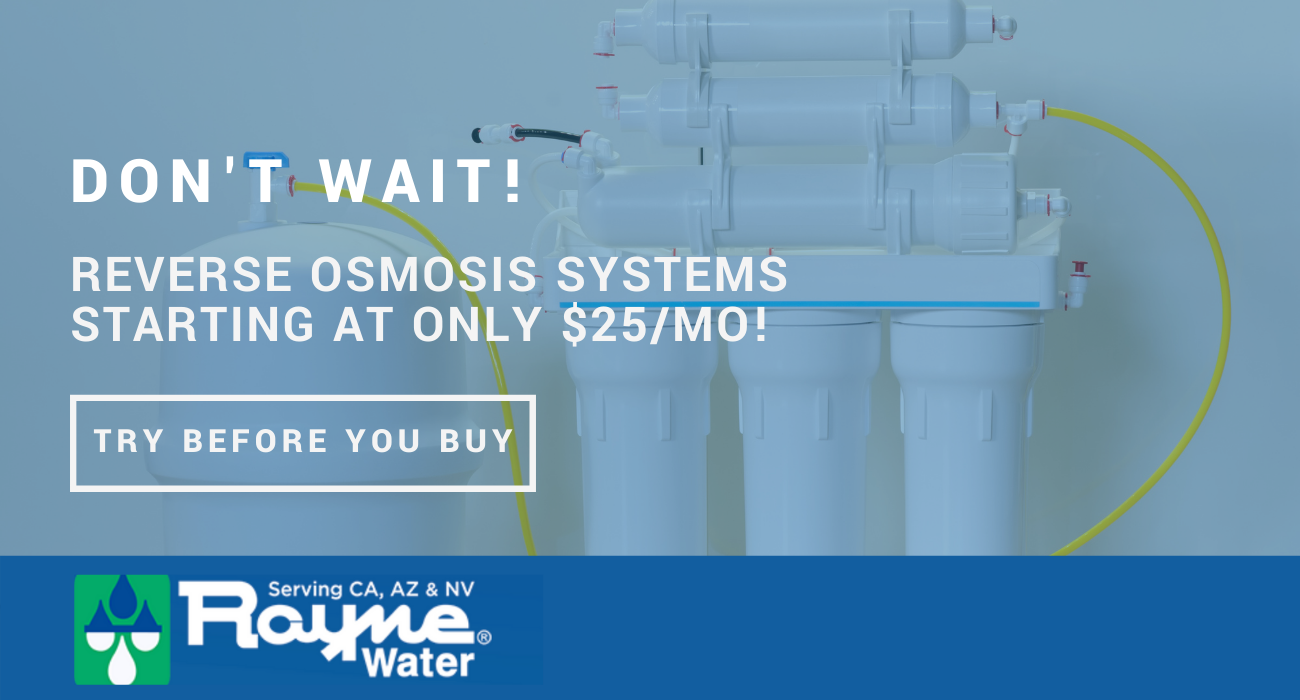Author: Ken Christopher | 7 min read | Mar 17, 2020
Are you looking for effective in-home water filtration? Reverse osmosis systems are hard to beat for great drinking water, and some of them are small enough to be installed under your sink. Understanding what reverse osmosis is, how effective it is at removing contaminants, and what you should look for in an under sink reverse osmosis system can help you narrow down your options.
Reverse osmosis is a filtration method using a specialized membrane to separate unwanted contaminants from water. In a reverse osmosis water filtration system , contaminated water is forced at high pressure through the membrane to remove contaminants. The membrane in the reverse osmosis system has tiny pores that allow water molecules to pass through but not larger contaminants.
Reverse osmosis is one of the most effective water filtration methods available for residential drinking water. For people weighing reverse osmosis vs distilled and other purification methods, reverse osmosis tends to be the best choice for home use. With that being said, no filtration method is perfect for removing all contaminants. Like other water filtration methods, reverse osmosis removes some contaminants but not others.
Reverse osmosis is effective at removing microbes. This includes protozoa such as Cryptosporidium and Giardia, bacteria like Salmonella, Shigella, and coliforms like E. coli. RO systems will also remove viruses in the water, such as Hepatitis A and Norovirus.
Reverse osmosis systems are also highly effective at removing mineral ions, metal ions, and salts. These include sodium, copper, chromium, and chloride. They will also reduce levels of the heavy metal arsenic, which is often found in private wells, as well as other heavy metals found in tap water. If you are curious about what is demineralized water , it is water with these minerals, salts, and metal ions removed.

While a reverse osmosis filter is effective on its own against a wide range of contaminants, it won’t remove all of the contaminants you may want out of your drinking water. To eliminate such contaminants, a state-of-the-art reverse osmosis unit will incorporate additional filtration methods.
Pre- and post-filters have an important role in RO systems. Pre-filters capture sediment and large particles before the water is forced through the semipermeable membrane. This pre-filtration step extends the lifespan of your RO membrane by reducing membrane fouling from large particles.
Post-filtration using activated carbon water filters will capture a wider range of contaminants than a reverse osmosis membrane alone. Granulated activated carbon (GAC) filtration is excellent at removing disinfectants used in water treatment, like chlorine, and disinfectant byproducts like chloroform.
Post-filtration with activated carbon will also remove harmful volatile organic compounds (VOCs) from your tap water. Many VOCs increase the risk of developing certain cancers and may contribute to organ damage.
Not sure is reverse osmosis water safe ? When combined with pre- and post-filtration, reverse osmosis membrane filtration is highly effective at capturing the wide range of contaminants commonly found in tap water. Post-filtration through activated carbon will give your drinking water a clean, crisp taste by eliminating many of the odors and gases that contribute to poor tasting tap water.
RO systems come in two broad categories of configurations. Point-of-entry (POE) systems provide filtered water to your entire house and are installed where your water supply line comes into your home. Point-of-use (POU) systems are installed at a single faucet, usually at your kitchen sink.
When looking for a POU under the sink reverse osmosis system, you’ll want to ensure the system can provide a sufficient amount of filtered water each day. Between 35 – 50 gallons per day (GPD) is a good figure to shoot for. Higher producing systems are also available for households with higher demand.
Ensure the under sink reverse osmosis system you choose reduces the highest amount of total dissolved solids (TDS). These include minerals, metals, and salt ions, and are a good representation of the overall filtration capacity of the system. Look for systems offering a reduction of TDS by between 93-97%. Be sure your system also includes a sediment pre-filter and an activated carbon post-filter, which will provide the greatest reduction in potential contaminants.
You should also consider having your system professionally installed. Though reverse osmosis systems are small enough to fit into tight spaces, installation can be challenging in certain circumstances. Reverse osmosis systems also produce a small amount of wastewater, so you’ll have to install a drain line as well. You’ll also need to periodically change the under sink reverse osmosis water filter , so you’ll want to be sure to allow for relatively easy access.
Under-sink reverse osmosis filtration is a highly effective method of getting clean, filtered drinking water in your home. As a point-of-use system, under-sink reverse osmosis is used to provide drinking water at a single faucet. Though small in size, when configured with pre- and post-filtration an RO system is capable of reducing or eliminating a broad range of potentially harmful contaminants.
If you aren’t sure which reverse osmosis under sink system is right for you, call our helpful staff at Rayne Water today. We can walk you through your options and schedule a water test, which can help guide you towards the RO system that is right for you.

Sources: